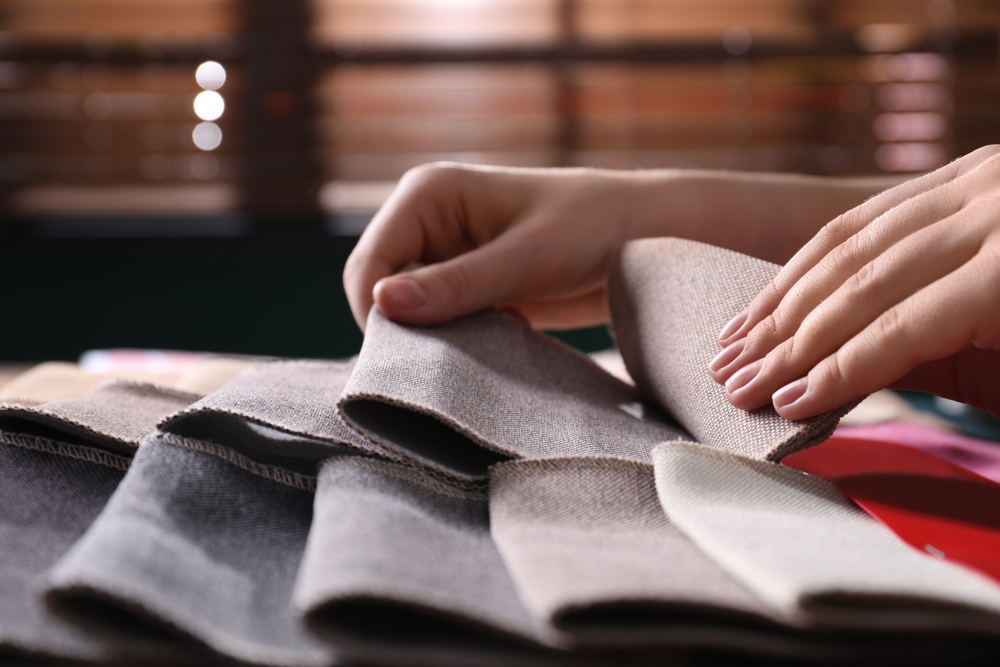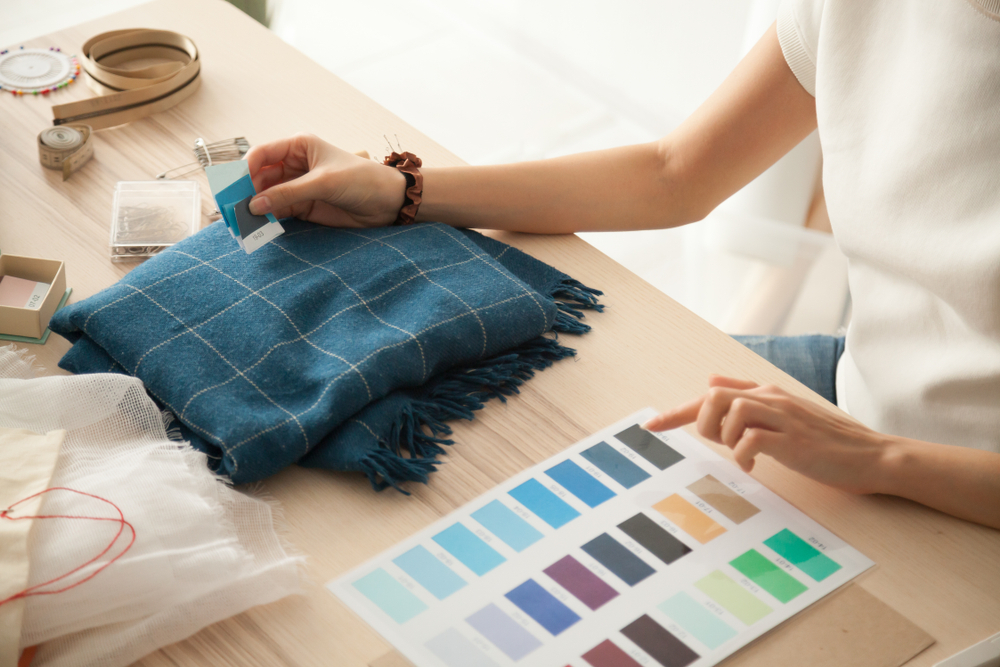Innovative Textiles You Ought To Know About



Fashion production contributes at least 10% of global carbon emissions. Currently, the garment and textile industry is the second-largest industrial source of pollution in the world. Excessive use of chemicals and water, overproduction of garments, and failure to deal with overstock are some of the many issues that this industry is dealing with.
Yet, this is also an industry that always comes up with ground-breaking innovations. Many people are working to minimise the negative impact of garment production on the environment. Hence, they have developed some fabrics trends that can be alternatives to fabrics made from petroleum-based fibres and cotton.
The increasing world population demands sustainable, longer-lasting and cruelty-free garments. These innovative textiles have been developed just in time to fulfil this demand.
Here are 11 such innovative textiles that can transform the textile industry and everything you ought to know about them.
1. Plant-based leather alternatives
Leather is considered a problematic product as millions of animals around the world are killed to make products made of leather. These days, more and more consumers refrain from using animal-based leather products as a lifestyle choice. Hence, many textile brands and investors have come forward with eco-friendly leather alternatives.
These plant-based leather alternatives are significant innovative textile trends that will provide consumers with more vegan options.
Apple
Apple waste by-products of the fruit juice industry are used to make leather. Leather made out of apples is biodegradable. Fashionable jackets and handbags, which are made out of apple waste, look and feel similar to leather and faux leather.
Since it is produced from renewable resources, it is eco-friendly and sustainable.
Producing fabric from apple waste begins with converting the waste into powder. Then, half the PU is mixed with the powder as it works as a binding agent. This ensures the longevity of the leather product.
After that, the powder is dried out and turned into a leather-like material that can be used to produce various leather products.
Pineapple
Pineapple leather, popularly known as Piñatex, is also one of the most significant trendy fabrics as an alternative to leather. It is made from the waste of pineapple leaves after the fruits are sold.
First, the pineapple leaves are processed through decortication, where the non-fibrous substances are separated from the fibres. These fibres are then dried to produce a non-woven substrate. The end product is coated with petroleum-based resin that can give a smooth finish.
Since pineapple leather contains some amount of biomass resin layers, it is not entirely biodegradable. Still, it is a much better eco-friendly alternative to original leather or PU or PVC leathers. Producing pineapple leather does not release any poisonous gases or chemicals during the tanning process as other leather products do.
Mushroom
Although mushroom leather has risen in popularity as a leather alternative product recently, the production of this product came from the centuries-old tradition where mycelium, the key ingredient of mushroom leather, was cultivated.
Mycelium is the vegetative part or the branches of the mushroom. First, mycelium is grown in dampened or wet substances. Then, the material is compressed in various ways to produce a variety of textures, including alligator skin and snakeskin.
This is also a great alternative to real leather, as the process of preparing this alternative leather requires minimal resources without harming any animals. This vegan-friendly fabric also ensures its excellent durability, tenacity, and water resistance.
Teak leaf
As an alternative to real leather, teak leaf leather is known for its various qualities—it is lightweight, highly durable, and water-resistant. During the preparation of this fabric, there is no harm caused to the teak trees by plucking its leaves or cutting down trees.
This is because it is made from fallen leaves. Thus, there is no additional damage to the environment. In the process of making teak leaf leather, the leaves are mixed with a small amount of cotton and laminated with BOPP film, which is entirely biodegradable.
Versatile cotton alternatives

When it comes to the list of innovative textiles, one cannot forget the names dynamic trio – hemp, lotus, and nettle—as they are the champions as cotton alternatives.
Hemp
Hemp is a great innovative garment fibre that originates from a fast-growing plant with little to no care. Moreover, the cultivation of hemp is super-easy, environmental-friendly as it improves soil health by refilling all-important nutrients and thwarting erosion.
Hemp fabrics can kill bacteria as these are naturally anti-microbial. This alternative cotton material has the best heat capacity compared to other fibres. As a result, it can be easily combined with dyes, eliminating the chance of discolouration.
The only challenging part of producing hemp fabrics is that it is associated with the production of Cannabis sativa plants, which are used regulated or restricted due to their use as recreational drugs. However, due to the enormous benefits of producing hemp, many mainstream brands such as Adidas, Patagonia, Quiksilver, and others have popularised it as garment fibre.
Lotus
In the list of innovative fabric trends, the lotus fibres are known for producing luxurious materials that look and feel like a combination of silk and raw linen. Earlier, it was known as a rare fabric in the countries like Myanmar and Thailand.
Today, innovative brands have rediscovered this material. Fabric made of lotus fibre can be an excellent alternative to cotton-based fabric, as lotus fabric is soft, silky, lightweight, and breathable. Overall, it can produce a soothing, calming effect on the wearer.
Lotus fabric also comes with several health benefits along with its eco-friendly sustainability.
Nettle
Another cotton alternative is nettle fibre, known for its extreme versatility, like hemp and lotus fibres. The fibre is capable of keeping the wearer warm in the winter and cool in the summer. Moreover, unlike hemp, there is no legal restriction on producing this fibre, whereas nettle needs less water, pesticides, and herbicides to grow.
Qmonos silk

Qmonos silk, also known as spider silk, comes on the top among the leading innovative textiles. This is a functional and eco-friendly fabric produced through microbial fermentation. Although complex to understand, the production of spider silk ensures a highly durable fabric, five times stronger than steel.
In fact, Qmonos silk is believed to be a far better alternative to pure silk, which involves the breeding of silkworms. Above all, the biodegradable material is a great innovative fabric for sutures or stitches.
Tencel lyocell
Tencel or lyocell fibres are known for their natural comfort and versatility. The fibre is actually a kind of rayon whose main ingredient is cellulose. It is derived from hardwood pulp mixed with chemical solvents.
Once the wet mixture is dried up, it is shaped into long threads. Then, these are further treated with lubricants to make them prepared for coming through. Then, these are ready to knit to the shape of fabric or combined with other fabrics such as cotton, polyester, or acrylic.
The solvent used in its manufacturing process is non-toxic and reusable. Most importantly, lyocell is a biodegradable fibre that needs less dye and water than other fibre products.
Econyl
Econyl is basically recycled nylon. Interestingly, the raw materials required for making econyl are mostly ocean wastes such as fishing nets, fabrics, and plastics floating in the seawater. These waste materials are collected, sorted, and disintegrated into smaller pieces.
In the process of preparing econyl, the shredded material is treated through chemical reactors to produce yarn as the final product.
Econyl contains similar properties as nylon. But, it is made of ocean waste materials, making it a preferred fabric choice for swimwear and sportswear.
The most important property of this innovative textile fabric is that it is recyclable and produced through a closed-loop system where minimal water is required. Clearly, econyl is an excellent alternative textile that can save tonnes of crude oil and millions in the carbon footprint.
Brewed protein
Just like spider silk, brewed protein is also a great silk alternative engineered in Japan. Similar to Qmonos silk, the fundamental manufacturing process of brewed protein is the same—microbial fermentation.
This alternative silk material can be given a wide variety of textures ranging from silky strands to cashmere yarns. The versatility of this protein fibre makes it stand out from other materials.
It is completely vegan, remarkably strong and soft to touch. Along with its biodegradable quality, this alternative textile fibre doesn’t produce any greenhouse gases and requires minimal use of natural resources.
In a nutshell
Innovative fabrics trends are always welcome in the textile and fashion industry as long as they reduce the carbon footprint. So even if alternative leathers or cotton might need to use a minimal amount of plastic to expand their longevity, it can be considered a sustainable process of producing garments.
Are you in the apparel manufacturing business and looking for the right direction to increase scalability? Fashinza is the right supply chain platform to grow your business with innovations and strategies. Contact Fashinza to make your garment manufacturing process hassle-free and transparent.



















